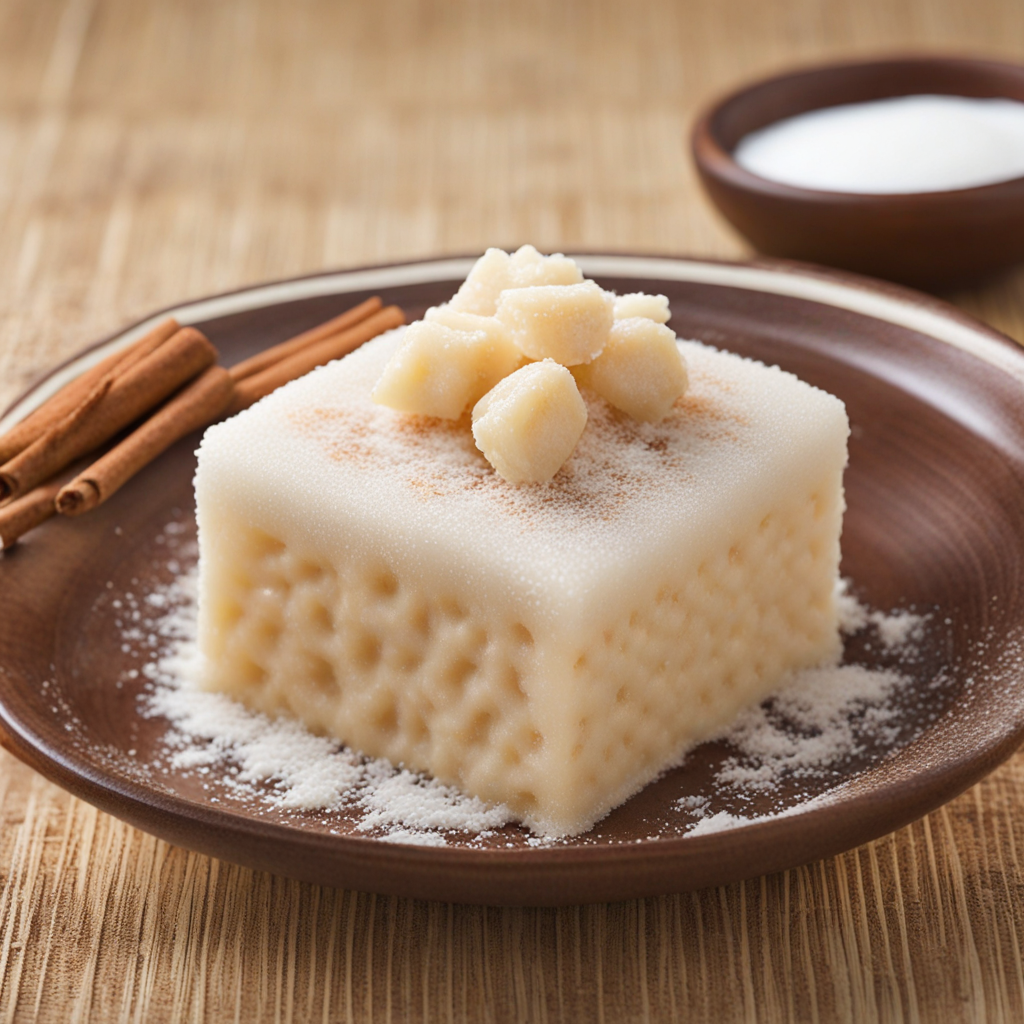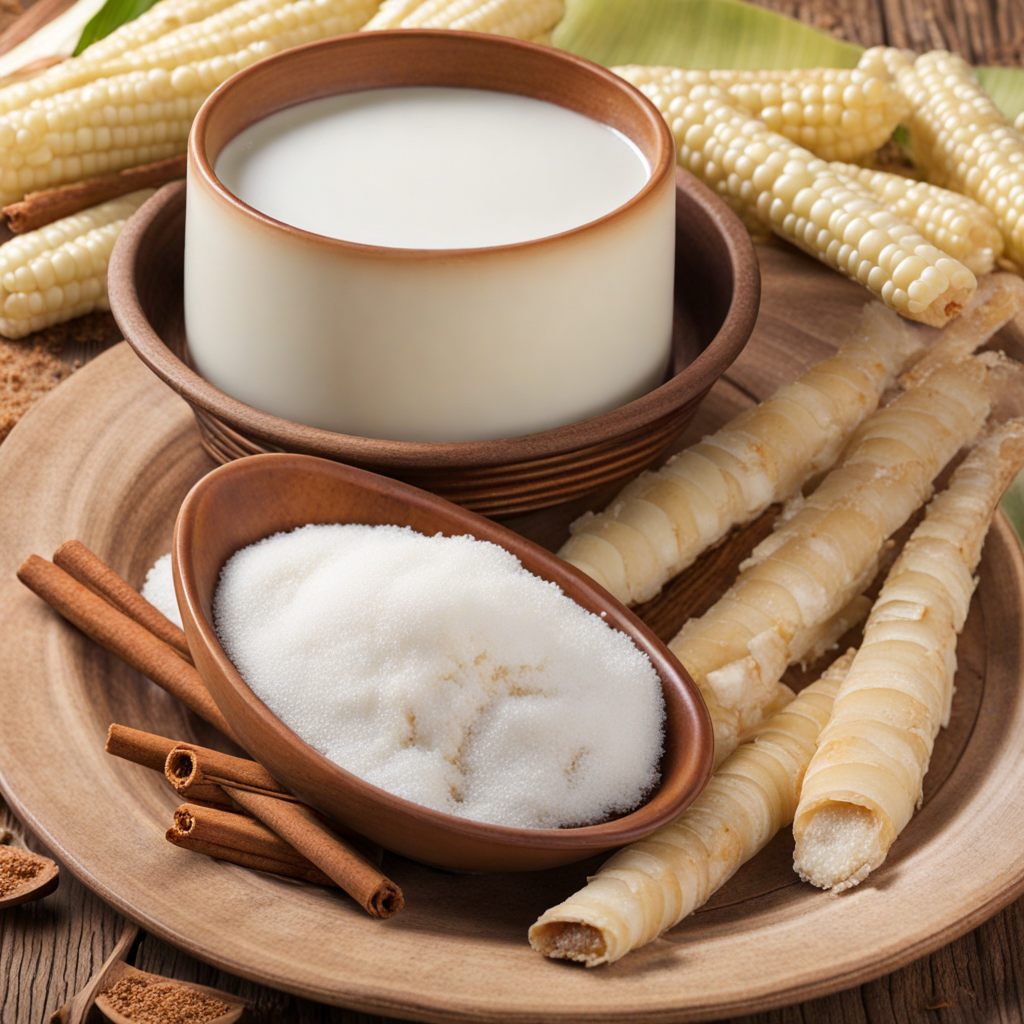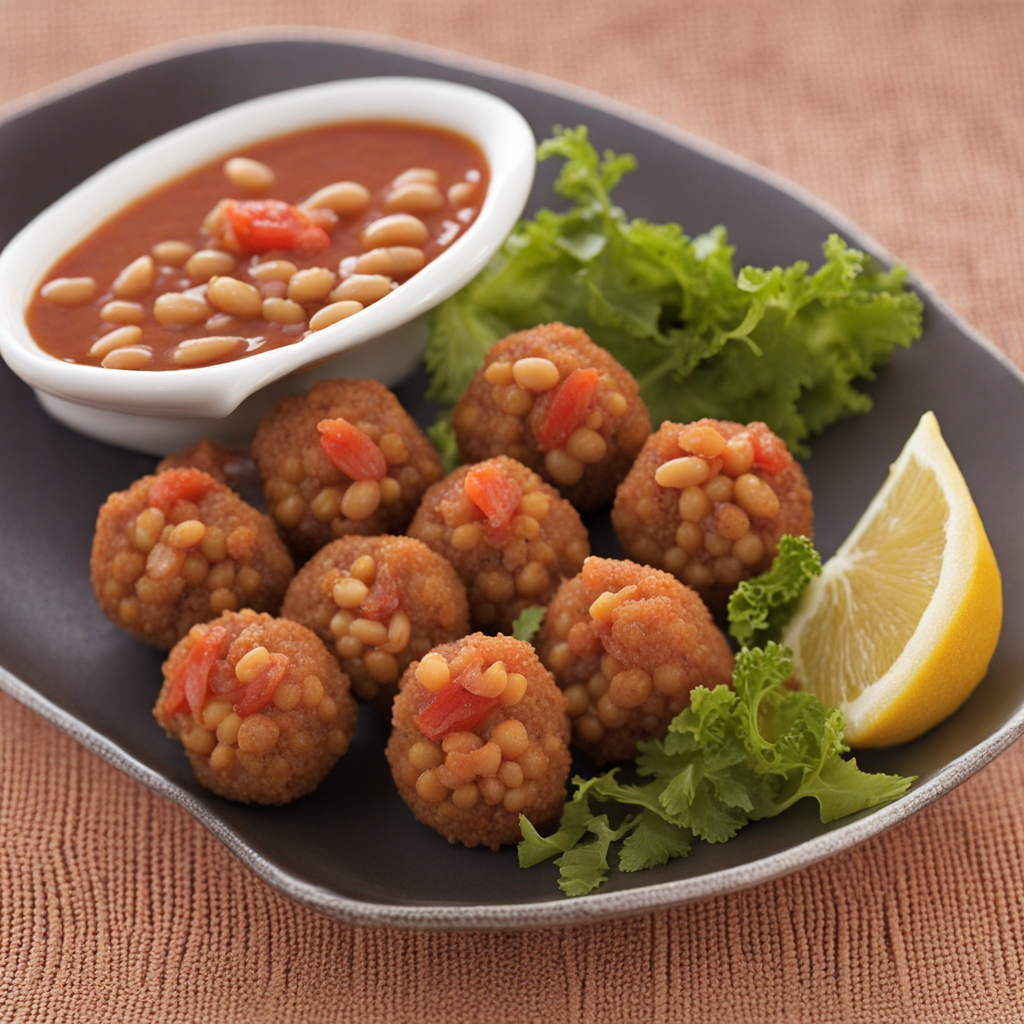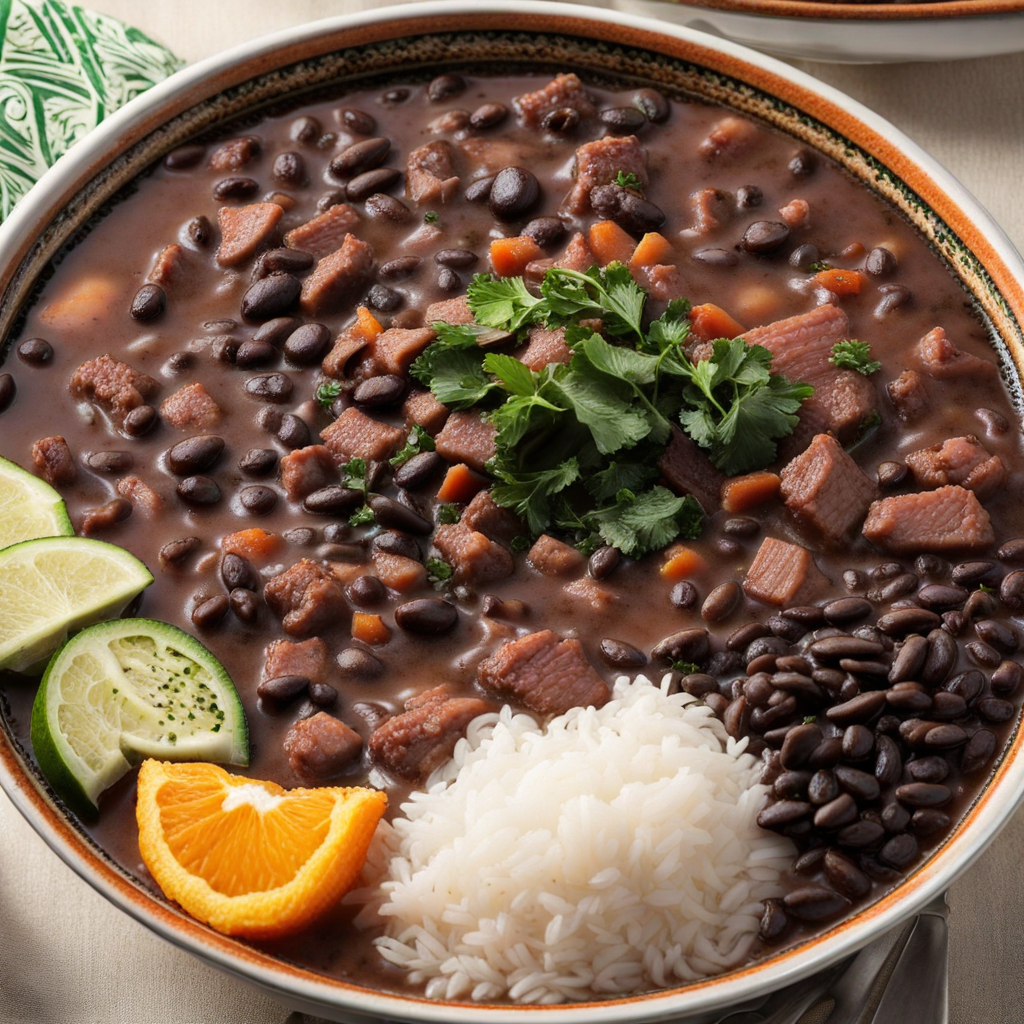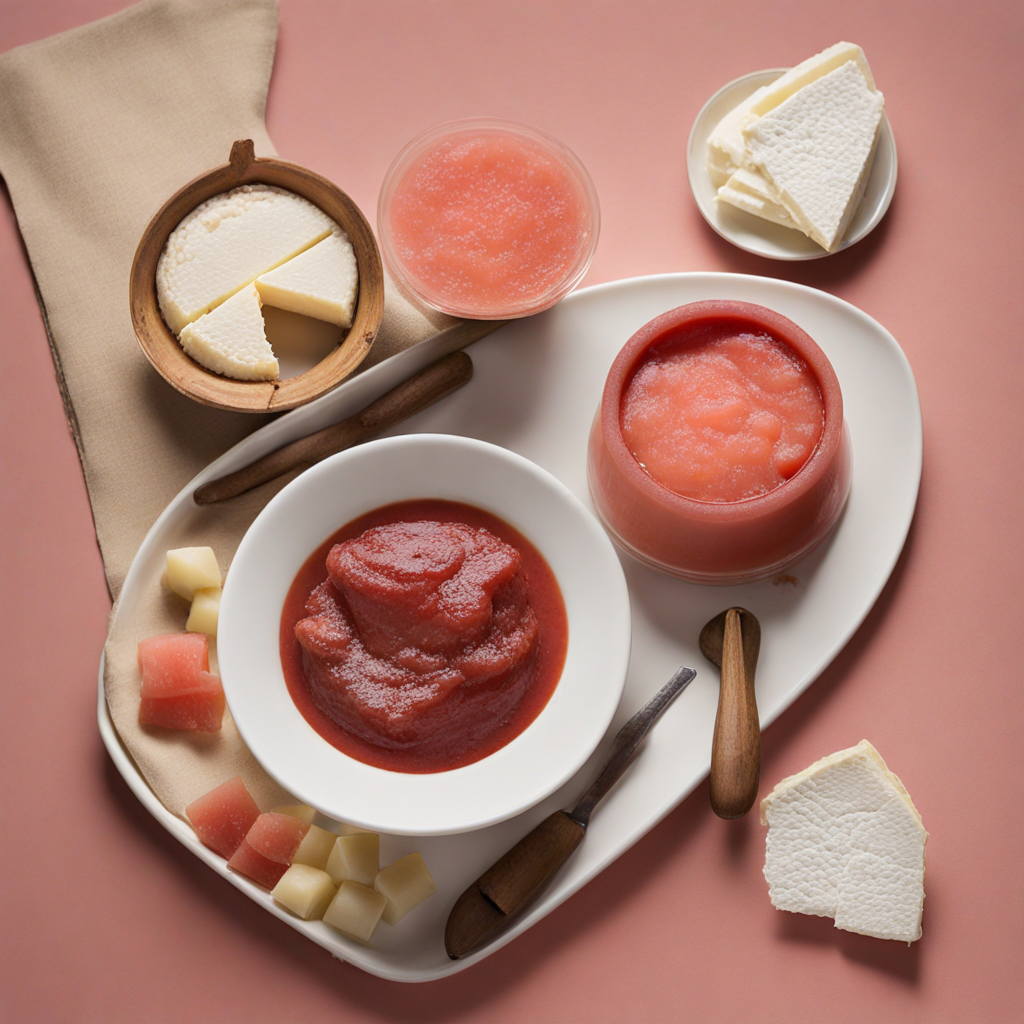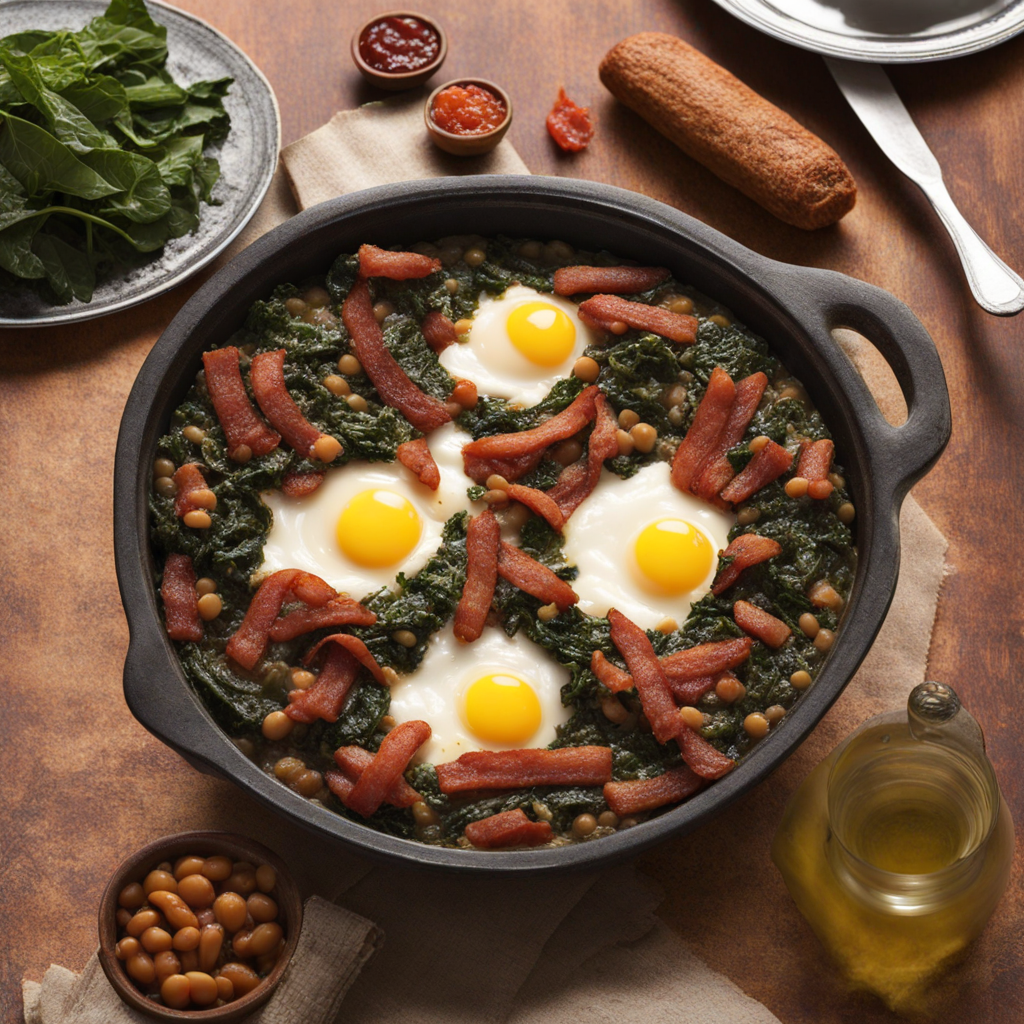Canjica
Canjica is a traditional Brazilian dish that offers a delightful fusion of textures and flavors. Made primarily from hominy corn, this dish is characterized by its creamy, thick consistency that is both comforting and satisfying. The corn is cooked slowly until it becomes tender, and it is typically combined with milk, sugar, and a hint of cinnamon, resulting in a sweet and slightly spiced treat. The texture is reminiscent of a warm pudding, making it perfect for those seeking a cozy culinary experience. This dish is often enjoyed during festive occasions, especially during the winter months and June festivities, where it is a staple. It can be served warm or cold, allowing for versatility depending on personal preference. Some variations also incorporate coconut milk or grated coconut, adding a rich tropical flavor that beautifully complements the sweetness of the corn. The aroma of cinnamon wafting through the air while Canjica is being prepared is enough to entice anyone to try this delightful dish. Canjica can be garnished with an array of toppings, such as peanuts, chocolate sprinkles, or even a drizzle of condensed milk, enhancing its flavor profile and adding a satisfying crunch or richness. Each bite reveals a harmonious blend of sweetness and creaminess, making it a beloved comfort food for many Brazilians. For those looking to explore new tastes, Canjica offers a unique glimpse into Brazilian culinary traditions, inviting you to savor its rich history and delicious flavors.
How It Became This Dish
The Rich History of Canjica: Brazil's Sweet Corn Delight #### Origins Canjica, a beloved Brazilian dish, is a traditional sweet treat made primarily from white corn, known in some regions as "milho branco." Its origins can be traced back to the indigenous peoples of Brazil, who cultivated corn long before the arrival of the Portuguese in the 16th century. Corn, or maize, was a staple in the diets of various indigenous groups throughout the Americas, and its versatility allowed for a plethora of culinary applications, including the preparation of canjica. Indigenous peoples would soak and cook the corn kernels, transforming them into various dishes for both everyday consumption and ceremonial purposes. This method of preparation laid the groundwork for the modern canjica. The dish evolved over time, absorbing influences from African and European cuisines, a reflection of Brazil's diverse cultural tapestry. #### Cultural Significance Canjica holds a special place in Brazilian culture, particularly in the context of traditional festivities. It is often associated with the June Festivals (Festas Juninas), celebrated across the country in honor of Saint John, Saint Anthony, and Saint Peter. These festivities are characterized by bonfires, traditional music, dancing, and a wide array of regional foods, with canjica being a star attraction. During these celebrations, canjica is prepared with a variety of ingredients, such as milk, sugar, cinnamon, and sometimes coconut. The dish is typically served warm, providing comfort and a sense of nostalgia for many Brazilians who associate it with childhood memories of family gatherings and community events. The preparation of canjica often becomes a communal activity, where families come together to cook and share stories, reinforcing social bonds and cultural identity. The dish also reflects Brazil's agricultural abundance, particularly in the Northeast, where corn is a vital crop. For many, canjica is not just a treat; it embodies the resilience and resourcefulness of the Brazilian people, who have adapted their culinary practices to their environment and resources over centuries. #### Development Over Time As Brazil evolved through the colonial period into the modern era, so too did canjica. The Portuguese colonization introduced sugar and dairy products into Brazilian kitchens, leading to the sweetened versions of canjica that are popular today. The combination of corn, milk, and sugar created a dish that is rich and satisfying, appealing to both indigenous and European palates. In the 19th and 20th centuries, as Brazil experienced significant social and economic changes, canjica continued to evolve. The dish became emblematic of regional identities, with variations appearing across the country. Each region incorporated local ingredients and culinary techniques, resulting in a rich tapestry of variations. For example, in the Northeast, canjica often includes coconut milk and is sweeter, while in the South, it might be made with a more subtle flavor profile, using spices like cloves and nutmeg. With the advent of globalization and the rise of the internet, canjica has transcended regional boundaries and gained popularity beyond Brazil. Brazilian expatriates and food enthusiasts around the world have embraced this dish, sharing recipes and adaptations that reflect their personal tastes and cultural backgrounds. In contemporary cuisine, chefs are experimenting with canjica, incorporating it into modern desserts or using it as a base for innovative dishes. #### Modern Interpretations Today, canjica is not just confined to traditional celebrations. It has made its way into contemporary Brazilian cuisine, where innovative chefs are reimagining this classic dish. Some have taken a gourmet approach, infusing canjica with exotic flavors or pairing it with upscale ingredients, such as artisanal chocolates or spices from around the world. This creative reinterpretation ensures that canjica remains relevant in the ever-evolving culinary landscape. Moreover, as health consciousness grows, there has been a trend toward using organic or whole-grain corn in the preparation of canjica. This shift reflects a broader movement within Brazilian cuisine, where traditional dishes are reexamined and adapted to meet modern dietary preferences without losing their cultural essence. #### Canjica's Place in Brazilian Identity In the fabric of Brazilian society, canjica serves as a reminder of the country's rich history and diverse influences. It encapsulates the fusion of indigenous, African, and European culinary traditions, making it a symbol of Brazil's multicultural identity. The dish is more than just a treat; it is a narrative of the land, its people, and their resilience. As Brazilians navigate the complexities of modern life, canjica remains a comforting presence, evoking memories of simpler times and shared experiences. Whether enjoyed during the June Festivals or as a comforting snack on a chilly evening, it continues to be a cherished part of Brazilian culinary heritage. #### Conclusion Canjica is a testament to the enduring power of food as a cultural connector. Its journey from indigenous roots to a modern delicacy showcases the adaptability and creativity of Brazilian cuisine. As this sweet corn dish continues to evolve and inspire, it reinforces the idea that food is not just sustenance but a vital part of cultural expression and identity. In every bite of canjica, one can taste the history, the struggles, and the triumphs of the Brazilian people, making it a dish worthy of celebration and preservation.
You may like
Discover local flavors from Brazil


